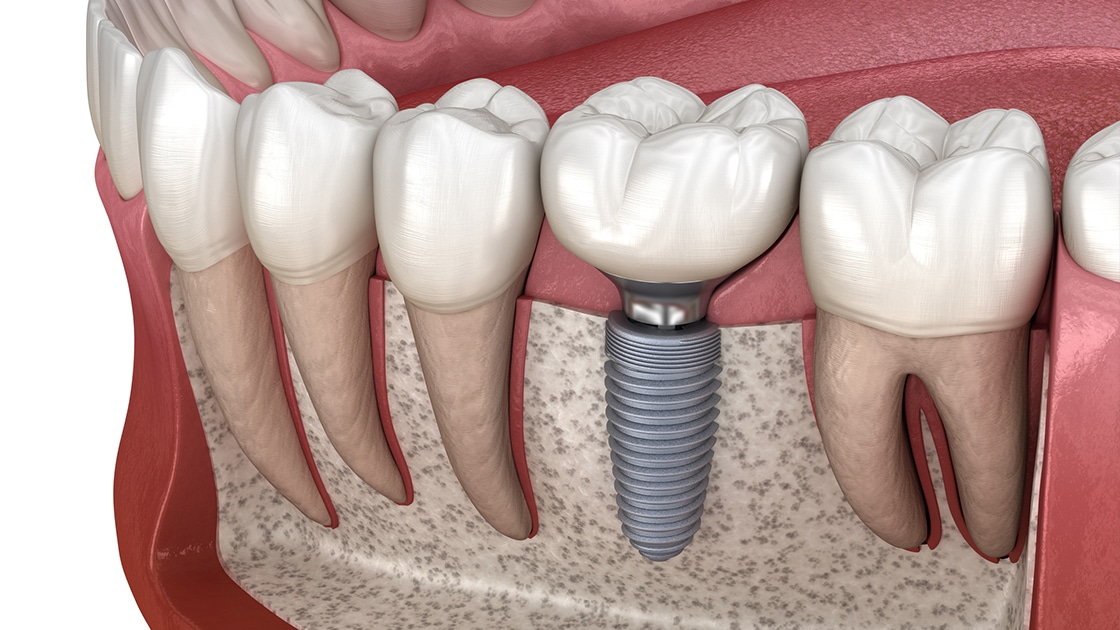Getting My Dental Sense To Work
Getting My Dental Sense To Work
Blog Article
How Dental Sense can Save You Time, Stress, and Money.
Table of ContentsNot known Details About Dental Sense Things about Dental SenseSome Known Questions About Dental Sense.The Ultimate Guide To Dental Sense
are medical devices operatively dental implanted into the jaw to bring back an individual's capacity to eat or their appearance. They supply assistance for synthetic (phony) teeth, such as crowns, bridges, or dentures. When a tooth is lost as a result of injury or condition, a person can experience problems such as quick bone loss, faulty speech, or adjustments to chewing patterns that cause discomfort.Dental implant systems consist of a dental implant body and oral implant joint and might also include an abutment fixation screw. Professional teeth whitening. The dental implant body is operatively inserted in the jawbone in place of the tooth's root. The oral implant abutment is typically connected to the implant body by the joint addiction screw and prolongs through gum tissues into the mouth to sustain the connected synthetic teeth
(https://www.slideshare.net/matthewmusic33101)Framework of The Dental Implant System selecting dental implants, talk to your dental copyright regarding the possible benefits and dangers, and whether you are a prospect for the procedure. Points to think about: Your overall health and wellness is an important variable in figuring out whether you are a good candidate for dental implants, for how long it will require to heal, and how long the implant might remain in location.
Smoking may influence the recovery process and decrease the lasting success of the implant. The recovery process for the implant body may take a number of months or longer, during which time you typically have a short-lived joint in area of the tooth. the dental implant treatment: Thoroughly comply with the oral health guidelines offered to you by your dental copyright.
Dental Sense Fundamentals Explained
Implant failure can result in the demand for another operation to repair or replace the dental implant system. Recovers the capability to chew Restores aesthetic look Aids maintain the jawbone from diminishing as a result of bone loss Preserves the wellness of the bordering bone and periodontals Aids keep surrounding (neighboring) teeth stable Boosts lifestyle Damage to bordering all-natural teeth during implant positioning Injury to the surrounding cells during surgical procedure, such as sinus opening Injury during surgical treatment (for instance, crack of surrounding jawbone) Insufficient function, such as really feeling like the teeth do not attack together usually A sensation that the tooth is loose or twisting in area arising from a joint screw loosening Implant body failure (looseness of the implant body) because of systemic infection, which might be more probable in individuals with unchecked diabetes due to regional infection in bone and periodontals sustaining the dental implant body as a result of postponed healing, which might be a lot more most likely in clients that smoke Problem cleaning the periodontals around the implant, resulting in bad dental hygiene Unattended gum illness Post-surgical numbness as a result of nerve impingement or damages Constantly inform health and wellness treatment companies and imaging technicians that you have dental implants prior to any kind of magnetic vibration imaging (MRI) or x-ray procedures.
FDA is not mindful of any kind of damaging events reported for MRI or x-ray procedures with oral implants. Dental implants systems are commonly made from products that adhere to worldwide agreement criteria of the International Company for Standardization (ISO) or ASTM International. These standards have details of what makes a risk-free product.

An oral implant is a framework that changes a missing out on tooth. With screw-like tools, the doctor inserts an implant into the jawbone, and it acts as an anchor for a synthetic tooth, called a crown.
Indicators on Dental Sense You Need To Know
Some people are not eligible for dental implant surgical treatment. It is for oral surgeons to operate people with: acute illnessuncontrollable metabolic diseasebone or soft cells illness or infectionIf these issues are fixed, a person can have the surgical treatment. In, dental cosmetic surgeons avoid running on people with: If individuals with any of the above undertake dental implant surgery, there is a greater danger of the implant stopping working.

Dental dental implant surgical procedure is an individualized process. It's not the same for everybody. The adhering to gives a general introduction of what you can expect your dental expert, oral doctor, periodontist or prosthodontist to do: Place a knockout post the dental implant operatively. Give you time to recover. Affix the blog post and last crown, bridge or denture.
Next off, your doctor will very carefully place the dental implant right into your jaw. Your surgeon will reposition your gums and close the cut with stitches. If your dental implant is near the front of your mouth, your dentist will certainly make a temporary tooth for you to put on till you heal. This way, you won't have a space in your smile while you recoup.
The Best Guide To Dental Sense
Your copyright can inform you what to anticipate in your circumstance. During the recovery phase, your jawbone ought to fuse to the dental implant. This process, called osseointegration, is critical for security and lasting success. This procedure can take anywhere from three to 9 months. In some cases, it might take longer.
When your dental implant heals, your dental expert can connect the joint (small connector post) and your last remediation (crown, bridge or denture). This generally takes about one hour to finish and may need a second small surgical treatment. You shouldn't feel any pain during your oral implant procedure because your service provider will certainly make use of medication to numb your periodontals.
Report this page